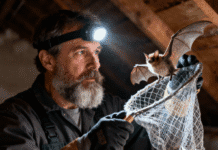Last Updated on June 3, 2025 by Nasir Hanif
Inspect your home for hazard and repair. It should not be taken lightly. There are several steps you can take to ensure that your home is safe and properly maintained.
Table of Contents
Walk around the perimeter of your home both inside and outside
It is incredibly important to Inspect your home for potential hazard and repair. Taking a thorough walk around the perimeter of both the inside and outside of your home will let you know if there are any cracks or holes in the walls, foundation, or roof. If you spot any damage to the roof, it’s wise to look into roof replacement as quickly as possible to avoid further damage. Being vigilant about tackling any found problems can prevent costly repairs down the line and keep your family safe from dangerous situations.
Look out for any standing water on or around your property
It’s especially important to look out for any standing water on or around your property as this can lead to mosquitoes and other pests, water damage, and even flooding in extreme cases. Inspecting your yard for any standing puddles of water and looking for blocked gutters or broken pipes can help you nip these issues in the bud before they become bigger problems. Furthermore, regularly inspecting your home’s exterior can help keep the physical condition of your residence up-to-date and make sure you’re back in tip-top shape.
Inspect all utilities such as electrical outlets and appliances
Making sure that all of your utilities are in proper working order and reliable will ensure the well-being of your family and property. Electrical outlets, appliances, and smoke alarms should all be carefully inspected to make sure they’re up to code. A thorough examination of these items can help you identify a potential hazard or weak spot before it becomes a serious problem.
Making sure everything is safe and secure can give you peace of mind that your home is protected from hidden threats like faulty wiring, outdated appliances, or inadequate roofing. Spending the time now to give your house a check-up could very well save you trouble down the road.
Check doors and windows
Checking doors and windows to ensure they close securely is key, as these can be entry points for unwanted guests like intruders or bugs. Make sure all locks are working properly and consider adding additional security measures like extra locks if needed. If there is difficulty in closing the door or window, it could indicate a problem with the frame or perhaps some debris within the track that needs to be removed so that it can open and close without any issues.
Check the plumbing system
Checking the plumbing system of a home is an essential part of home upkeep and maintenance. You should inspect all the pipes, drains, valves, and faucets inside and outside of the home. If you see any corrosion, staining, or leaking then these need to be addressed right away before another potential damage occurs due to water accumulation and build-up.
Make sure that all hose connections are snugly fastened as loose connections can often lead to leaks. As well, if it has been some time since checking your plumbing system, there may be outdated and worn-out components that require replacement. Attention to detail can help save costly repair bills in the future and also provide peace of mind knowing that one’s plumbing system will not fail them when it’s needed.
Check structural elements such as flooring and stairs
One critical aspect of the inspection involves giving careful attention to all structural elements such as flooring and stairs. If any sign of damage or deterioration is noticed, it should be addressed immediately in order to reduce any further risk of accident or injury. This could also prevent more costly repairs from being needed in the future due to neglect.
Pay attention to signs of pests or rodents
Pay attention to small signs that may alert you to bigger problems, such as droppings that hint towards pests or rodents inside or outside the house, strange sounds coming from the walls, or having furniture and other items moved in odd positions. Taking some time to properly investigate these signs sooner rather than later will help you prevent a much bigger issue down the road. Make sure to call an expert if it looks like something more serious than you can handle on your own – just a few simple steps can make all the difference in protecting yourself and your family!
The process of inspecting your home may seem tedious but by completing these steps every six months you can rest assured that you have done everything possible to keep a healthy living environment for yourself and your family members.
Apart from that, if you are interested to know about Home Inspection Problems that can Lead Potential Home Buyers to Rethink their Decision then visit our home improvement category.
















